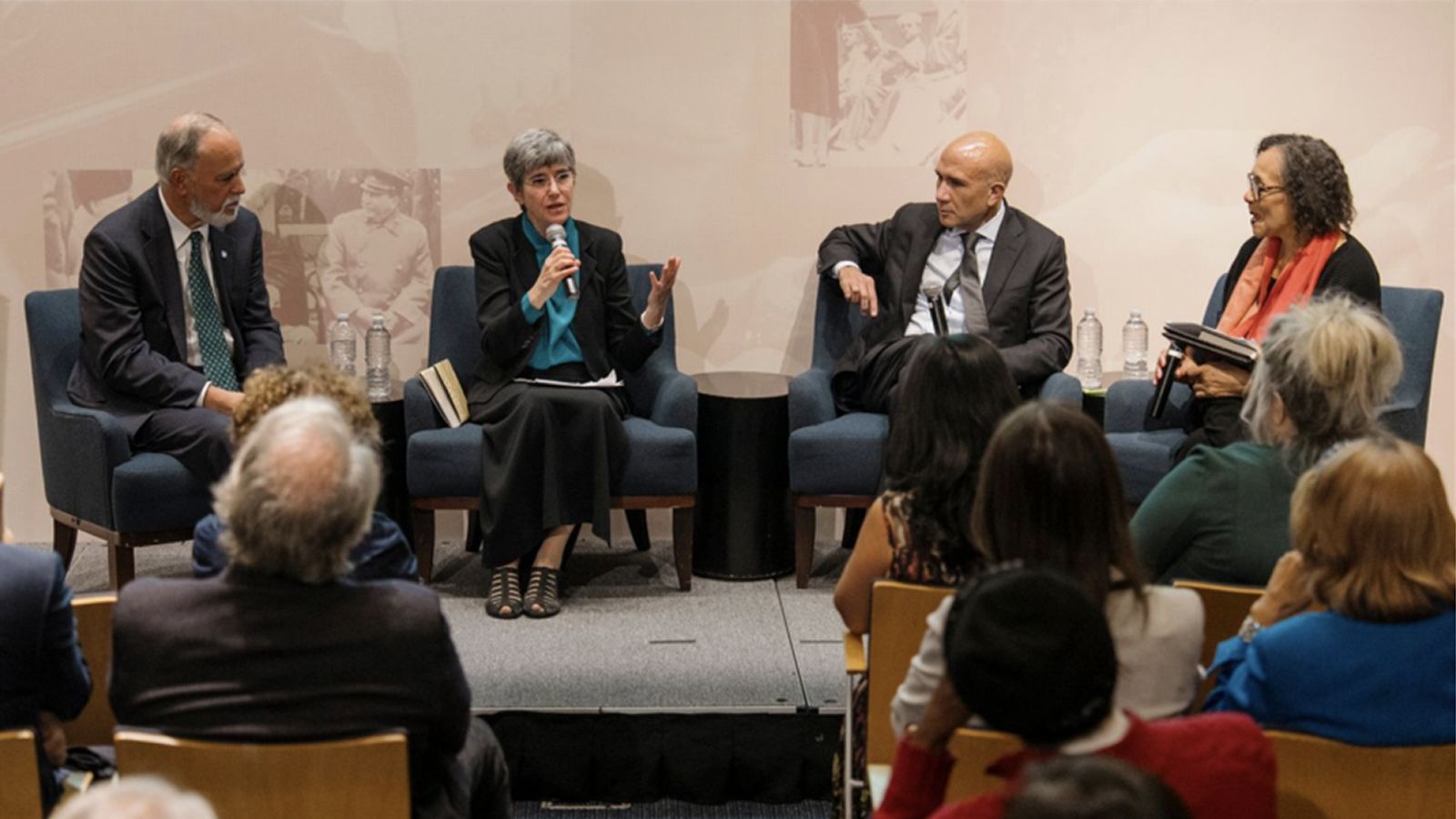Structural racism. Unconscious institutional biases. Transformative, inclusive leadership.
These were some topics discussed as Hunter College’s “Promoting Civil Discourse & Intellectual Dialogue” series kicked off its second year October 16 with a panel on Columbia University law professor Susan Sturm’s provocative book What Might Be: Confronting Racism to Transform Our Institutions.
“I told a dean of a very prominent law school, not my own, a white man, that I was writing a book that was intended to help people who work in predominantly white institutions learn how to confront racism,” Sturm recounted. “He looked at me and said, ‘Why are you writing that book? You’re only going to get yourself in trouble.’”
Trouble, certainly, but the kind of “good trouble” that advances justice in our multiracial democracy, as the panel asserted.
Sturm’s book is the sixth in the Princeton University Press series “Our Compelling Interests,” edited by Hunter President Nancy Cantor and Earl Lewis, the Thomas C. Holt Distinguished University Professor of history, Afroamerican, and African Studies, and Public Policy and director of the Center for Social Solutions at the University of Michigan.
As Lewis said, “The objective has always been the same: To talk openly and expertly about the relationship between diversity and a prosperous democracy.”
The panel, which took place at the Roosevelt House Public Policy Institute included Sturm, CUNY Chancellor Félix Matos Rodriguez, and Russell Sage Foundation President and sociologist Bruce Western. Journalist Carol Jenkins moderated.
“Promoting Civil Discourse & Intellectual Dialogue” was launched in November 2024 to foster a campus environment in which understanding and empathy can flourish. A series of lectures, panel discussions, and community events, it seeks to provide a platform for thoughtful engagement and bridge-building on critical topics surrounding conflict, identity, and the search for common ground.
Sturm, the founder of Columbia’s Center for Institutional and Social Change, spoke about leading collaborative projects with education, criminal justice, and community development leaders. In one, Corridors to College, she worked with Chancellor Matos Rodriguez when he was the president of CUNY’s Hostos College in the South Bronx a decade ago. The collaboration created partnerships with community groups so that Hostos could extend its reach and services into the surrounding neighborhood to ensure more pathways to higher education.
“We did not only frame the work we were doing in The Bronx around issues of race, but we did not shy away from the issues of race, because you couldn’t,” the chancellor said. “How could you when you’re dealing with issues that really matter to communities affected by racism and incarceration?”
The conversation centered on how to navigate the contradictions built into America’s racialized history, relationships, and institutions. Sturm offered strategies and stories for confronting the “baked in” racism in predominantly white institutions, describing how those seeking change can move beyond talk to build full participation. She identified what she calls the paradoxes of anti-racism work. As she writes in her book:
- “The paradox of racialized power: Anti-racism requires white people to lean into their power to make needed change while simultaneously stepping back from exercising power in order to make space for people of color to lead
- “The paradox of racial salience: Effective anti-racism efforts must explicitly name and address issues in terms of race and racism while also proceeding in more universal terms rooted in shared interests rather than race
- “The paradox of racialized institutions: Predominantly while institutions must undertake anti-racism while simultaneously being the target of it.”
Jenkins asked Sturm whether the dismantlement of Affirmative Action by the courts and of Diversity, Equity, and Inclusion efforts by the administration had affected her vision.
“There is a very long history, from the time of the formation of our nation, of taking three steps forward and two or three or sometimes four steps back,” Sturm said. “I did anticipate that we would not see a straight line, because we never have. Did I anticipate that we would be in a situation where we’re navigating these paradoxes with leaders at the top of our country who don’t believe in the institutions that we’re talking about? That I did not foresee.”
Still, she seemed hopeful.
“I wrote the book with encouragement, to equip people who care about racism, democracy, and institutions to take some of the academic literature, some of the experience, some of the effort to try to transform institutions, and to make that accessible to people who really want to make change.”


